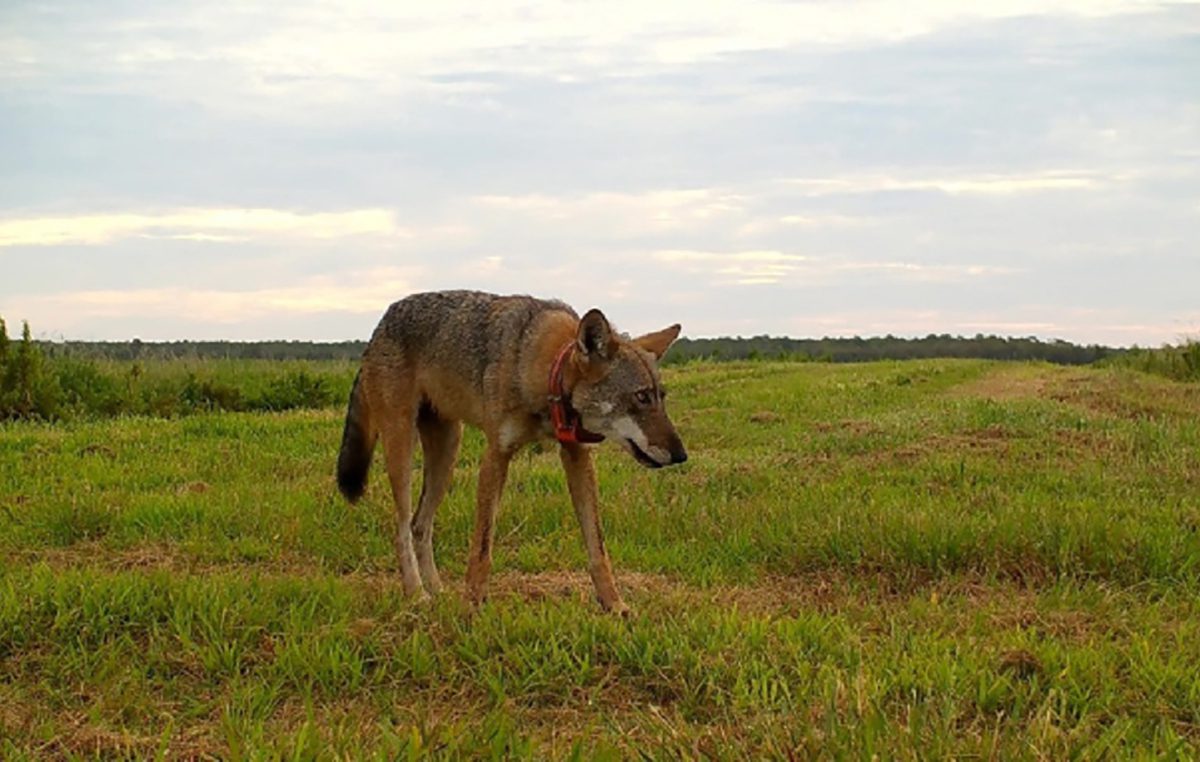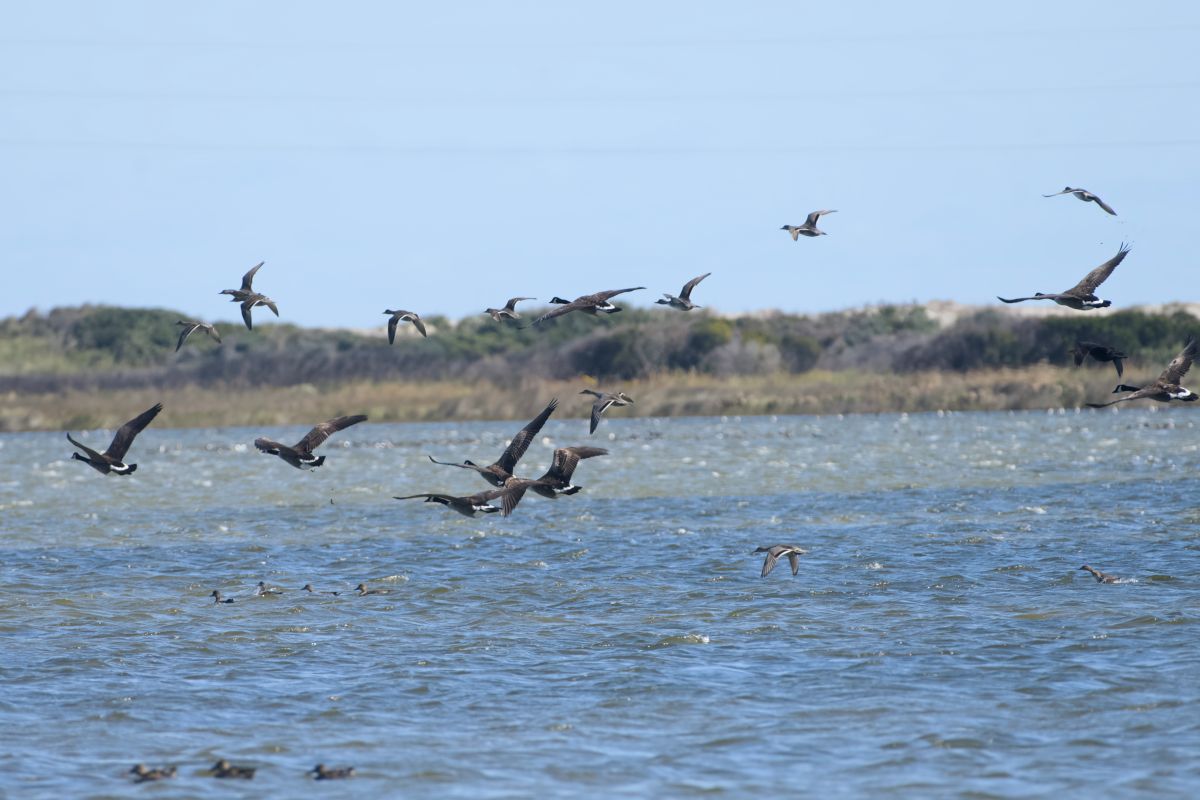
COLUMBIA — Whether red wolves will end up thriving in the wild is still a conservation conundrum, but now the critically endangered species is officially back in the game.
Wildlife conservation groups announced Wednesday a court settlement with the U.S. Fish and Wildlife Service that ensures continuation of successful management strategies and public engagement to restore the world’s only population of wild red wolves in northeastern North Carolina.
Supporter Spotlight
“These wolves and other endangered species across the South are a living testament to the fragile balance of our ecosystems and a symbol of the urgent need for conservation,” Southern Environmental Law Center Senior Attorney Ramona McGee and the group’s leader of its wildlife program, said in a prepared statement.
The agreement settles a 2020 lawsuit filed against the Wildlife Service in the U.S. District Court for the Eastern District of North Carolina by the law center on behalf of the Red Wolf Coalition, Defenders of Wildlife and the Animal Welfare Institute, contending the agency had violated provisions of the Endangered Species Act in its red wolf management.
In acknowledging the importance of the Eastern North Carolina red wolf population to the conservation and recovery of the species, the Wildlife Service confirmed in the seven-page settlement its commitment to manage the population “in a manner consistent with the ESA.”
In order to comply, the agency agreed to implement adaptive management strategies that include coyote sterilization and programs to release captive wolves and foster captive wolf pups into the wild population. Public engagement would be increased with stakeholders and property owners within the 1.7 million-acre recovery area that spans public and private land in Beaufort, Dare, Tyrrell, Hyde, and Washington counties.
“For more than 30 years, the U.S. Fish and Wildlife Service and its partners have worked to conserve and recover the red wolf,” the agency said in a prepared statement, adding that increased transparency is a focus of improved communication. “The Service has been undertaking a concerted effort to reengage with the local community of eastern North Carolina regarding red wolf management and recovery. The success of the Eastern North Carolina Red Wolf Population sets the stage for the Service’s ability to fulfill our responsibility to recover the species – which we cannot do without the local community and our conservation partners.”
Supporter Spotlight
The settlement requires the Wildlife Service to continue the specified conservation strategies for eight years, but makes no mention of actions beyond that period.
Although McGee declined in an interview to go into how terms of the settlement were reached, or details of the negotiations, she said that Fish and Wildlife may choose to continue to publish release plans, or take another approach.
“Eight years is a long time — it’s roughly two generations of red wolves,” she said. “That will go a long way in getting the red wolf on the right path.”
As one of the earliest listings on the brand-new Endangered Species Act in 1973, the red wolf has been on a conservation roller coaster from the beginning.
By the time the canid was listed as endangered, its once-expansion population in the Southeastern U.S. had been depleted by loss of habitat and overhunting to a handful wandering in an isolated area of Louisiana. Not long after, the red wolf was declared extinct in the wild. But in 1987, four pairs of captive-bred offspring of wild wolves from captures in Louisiana were transferred by Fish and Wildlife to the Alligator River National Wildlife Refuge in Manteo, and the animals were designated as “nonessential experimental population of wild red wolves.”
Through innovative conservation strategies, the population increased steadily to as many as 130 by 2015, leading to confidence that the species had a chance to recover. But at the same time, political support and public anger over species conflicts turned against the wolves, and conservation efforts declined while mortality from vehicle strikes, poisonings and gunshots increased. Before releases of captive wolves into the recovery area resumed after the Southern Environmental Law Center filed suit in 2020, the known red wolf population had been reduced to as few as seven, with only a total of 20 or so wild red wolves remaining in North Carolina.
Fish and Wildlife announced in February 2022 that it would restore the prior effective management tactics and work with community members to protect red wolves so the animals can co-exist safely on the land.
Since 2021, 20 captive adults and sub-adults were released, three were transferred from the St. Vincent National Wildlife Refuge, a barrier island area where paired red wolves can roam free and breed, and five captive-bred pups were fostered by wild wolf mothers with newborn litters.
Emily Weller, the agency’s red wolf program coordinator, said that the current known population of wolves — those wearing a digital collar — in the recovery area is 13, with an estimated total population of 23 to 25 wolves in the wild. Those numbers take into account recent mortalities, including one found dead May 18 in Washington County with a gunshot wound in its torso, and a female found dead on July 20; but also pups born in the wild or captive-bred pups snuck into newborn litters.
There are also a total of 26 sterilized coyotes within the Eastern North Carolina red wolf population, Weller said. One of the successful management techniques is to sterilize coyotes, but leave them hormonally intact. When they’re released, they continue to instinctively hold territory, but they can’t breed with the wolves. The result is they serve as placeholders, while limiting the number of coyotes. Also, captured hybrids are euthanized to limit interbreeding.
Of a number of red wolves released into the recovery area in the spring, some adjusted well, including a a captive-born family group comprised of a breeding pair and a yearling, Weller said in an interview. But unfortunately, a breeding male and a pup from that group have since died, she said, adding that the causes were still under investigation. Also, one of the captive-bred males that were released had to be recaptured and removed because of persistent visits to populated areas.
The settlement calls for the agency to submit a release plan every Dec. 1 for the next eight years. The final red wolf recovery plan is expected to be completed by late September 2023, the Weller said. That plan will incorporate the findings of the Population Viability Analysis, a draft of which is currently under review. Both plans will include details of what needs to happen for the species to recover, what they would look like, and what actions are required.
Although Weller said the specifics won’t be available until the plans are released, she said that the draft recovery plan estimated that recovery of the red wolf species could be reached in 50 years. Once the recovery plan is completed, she added, the agency will start working on the recovery implementation strategy, which will be a flexible plan that addresses the on-the-ground work and action needed to carry out recovery efforts.
Weller said that communication with community members and property owners is an important component of the success of the recovery program. To that end, earlier this year the agency signed a three-year contract with Francine Madden of Conservation Conflict, LLC., who will assist with transforming destructive energy in conflict to collaboration and progress.
“I think it’s going to help us engage better with the community and stakeholders, and help us build a better working relationship,” she said.
At a public information held in May, Weller said that increased population numbers depend on genetic diversity and decreased threats to the both captive and wild wolves. But true success will be evident when the red wolves don’t just need people not to hurt them, but also don’t need people to help them.
“For red wolf populations to ultimately be viable or successful, they must not be reliant on extensive human interventions, which we define as annual or frequent releases, fostering, translocations, and placeholder management,” she said at the meeting.
And the conservation effort must be collaborative.
“For any species, but particularly this one, effective recovery will require participation and involvement of all parties,” Weller said.
This report has been corrected to note that only one of the released captive-born male wolves had to be removed, rather than two as originally reported.







